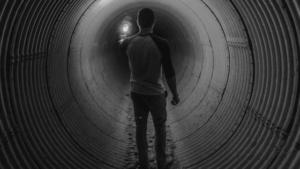Anxiety Disorders: Our Complete Guide

Throughout the course of human history, our bodies have adapted to deal with different kinds of stress. Our fight or flight response, governed by our autonomic nervous system which works outside of our conscious awareness, was originally designed to help us avoid dangerous and possibly life-threatening situations.
However, in our current society, our overall stress system will react to any kind of stress we experience, most of which don’t put our lives in immediate danger but can still cause fear and feelings of anxiety.
Although our body’s reaction to stress can motivate us to perform well at work and school, it can sometimes appear in situations where there is no real threat present, causing a disproportionate amount of anxiety, fear, and avoidant behaviours, which can manifest in a specific anxiety disorder.
What are the Different Types of Anxiety Disorders?
While these disorders differ in terms of what brings about their symptoms, they are all generally characterized by feelings of anxiety which can be officially defined as a negative state of mood that has the power to cause uneasiness, tension, and apprehension about specific events.There are several different types of anxiety disorders. This includes generalized anxiety disorder (GAD), social anxiety disorder, panic disorder, and specific phobias such as agoraphobia.
What Causes Anxiety Disorders?
There are a few different explanations for the development of anxiety disorders, the first of which is biological. Our individual genetic makeup passed on from our parents to us can create vulnerabilities that have the possibility of predisposing us to develop an anxiety disorder if specific psychological and social factors are also in play in our lives.
Additionally, anxiety can also be related to the dysregulation of certain neurotransmitters which are the chemical messengers in our brain that send information throughout our nervous system. Gamma-aminobutyric acid, more commonly known as GABA, is a crucial neurotransmitter when it comes to inhibiting feelings of anxiety.

The Connection Between Your Brain and Anxiety Disorders
Our brain’s limbic system is composed of the main structures involved in emotion, memory, and regulating how alert we are at a given moment. According to brain studies in which the activity of the brain is measured using imaging devices, people who suffer from anxiety have brains that are very sensitive to stimulation.Dysregulation in the levels of GABA in the brain has been shown to be associated with higher levels of anxiety. In addition to how our brain sends chemical signals, its structure can also play a role in anxiety. Recent research has suggested that people with anxiety disorders have a more responsive limbic system than those without.
Anxiety Disorders and Early Life Experiences
However, biological explanations of anxiety are not the sole contributors to its development, psychological contributions can also play a big role in this process. Our early life experiences can shape the way in which we learn to respond and cope with uncertainty.
At a young age, it is important for children to learn that they can rely on and trust their caregivers as a secure base, all the while exploring and learning how to cope if they experience situations that are out of their control.
People whose caregivers hover over them and protect them from hardship can have less opportunity to learn to cope with uncontrollable events or difficulties and can become more vulnerable to developing anxiety in later life.
Social Events and Anxiety Disorders
Social events can also further influence anxiety. Stressful events in relation to school, work, marriage, divorce, injury or illness can also make someone more vulnerable to experiencing anxiety symptoms. Overall interactions between biological, psychological, and social vulnerabilities don’t necessarily cause anxiety but they do have the capacity to place someone at an increased risk for developing a type of anxiety disorder.
Symptoms of an Anxiety Disorder
Anxiety disorders can manifest with many different symptoms. GAD is a condition characterized by excessive and uncontrollable worrying, fear and apprehension about many daily life events or activities.
In order to be diagnosed with GAD, an individual must experience at least three of the following symptoms in relation to their worry, these include feelings of restlessness, irritability, being easily fatigued, muscle tension or soreness, difficulty sleeping, and problems trying to concentrate.
They often worry extensively about things such as their responsibilities, job performance, their health or the health of others, school, or just typical life events throughout most of the day regardless of how big the supposed risk these things pose to them.
It may be so difficult to tune out the worries to the point that they can cause significant distress in an individual’s life. Many people with GAD can also experience further physical symptoms like sweating, diarrhea, or nausea.
 What is Social Anxiety Disorder?
What is Social Anxiety Disorder?
Social anxiety disorder, also known as social phobia, is characterized by the irrational fear and anxiety regarding being in social situations. Individuals with this disorder often worry about embarrassing themselves in front of others because they fear rejection.
People with this disorder experience inescapable and out of proportion fear when presented with a social situation where others may judge them. In order to be diagnosed, social anxiety must typically last for six months or more.
What is Panic Disorder?
Panic disorder is a condition in which people experience unanticipated and recurrent panic attacks in relation to feelings of fear, terror or anxious apprehension of a situation that poses no real threat. Panic attacks are characterized by strong feelings of fear or discomfort that arrive unexpectedly and reach a peak in the span of a few minutes.
What are the Symptoms of Panic Disorder?
These occurrences include at least four or more of the following symptoms, heart palpitations or accelerated heart rate, sweating, nausea, shortness of breath or feelings of being smothered, trembling, feelings of choking, chest pain, dizziness, chills or hot sensations, numbness or tingling, fear of losing control or dying, and feeling detached from oneself or experiencing feelings of unreality.

A diagnosis of panic disorder is made when someone has a panic attack and in the month following also experiences either pervasive worry about having another attack and its possible consequences or a change in their behaviour in order to avoid further attacks (e.g., avoidance of certain situations). The important characteristic of panic disorder is the unexpected nature of the attacks.
How is Panic Disorder Different From Other Anxiety Disorders?
Those who experience other sorts of anxiety disorders may also have panic attacks, but they are usually regarding a certain situation or event, those with panic disorder often have no way to predict when an attack will happen and are afraid of the attack itself.
Panic Disorder and Agoraphobia
Panic disorder often occurs in conjunction with agoraphobia, a condition characterized by fear and anxiety about two or more of the following circumstances which include using public transportation, being in open or enclosed spaces, standing in line or being in a crowded area, or being outside or home alone.
People with agoraphobia avoid specific situations because they fear that may not be able to get out of them or get help if they experience panic. In order to make a diagnosis of agoraphobia, the fears must typically last for a period longer than six months and must be persistent and excessive compared the actual threat posed by the situation.
Much like generalized anxiety disorder, panic disorder and agoraphobia can result from biological and psychological vulnerabilities coming into contact with social factors and experiences.
Learned Alarm and Panic Disorders
When people start to associate these internal cues (e.g., heart beginning to pound) with panic attacks, the next time they experience the sensation (e.g., heart rate increasing with exercise) they may think that they are having a panic attack. This form of conditioning, or the association of a reaction to an event, can lead to the development of a learned alarm, or a cue associated with panic.

This learned alarm, coupled with a psychological vulnerability to assume that your heart beating fast means that something terrible is happening to your body can cause a rush in anxiety resulting in a panic attack and the further development of panic disorder.
Phobias and Anxiety Disorders
In addition to agoraphobia, more general phobias can form when someone develops an irrational fear about an object or situation that restricts their capacity to live their daily life normally. Interaction with that object or situation incites instant anxiety or a fear response and people often try to avoid it or must endure it with these intense feelings of anxiety.
Like agoraphobia, specific phobias are lasting and tend to persist for about six months or more. Some of the most common phobias focus on certain animals (e.g., spiders, dogs, etc.), the environment (e.g., heights, water, etc.), blood-injection-injuries (e.g., needles, medical procedures, etc.), or specific situations (e.g., flying, being in an enclosed space, etc.).

Developing a Phobia
Phobias can be acquired by an individual directly undergoing or observing someone directly undergo a traumatic event related to the phobia. They can also develop through just being told about the dangers of an object or situation.
These factors, when paired with a psychological vulnerability to anxiety and our biological disposition to fear things that may pose a risk to our survival as humans (e.g., falling from a high height, being bitten by a poisonous snake, etc.) can cause people to develop a specific phobia.
Anxiety Disorder Treatments
Anxiety disorders can prove to be a challenge for those who have to deal with them on a daily basis. Luckily, a range of treatments exists to help people break the cycle of worrying that characterizes all anxiety disorders.
When approaching a healthcare practitioner about a possible anxiety issue, individuals will be assessed to see where they fit in terms of the DSM-5 criteria. Once a diagnosis is made, a treatment plan can be developed to ensure the best possible outcome for the individual. Treatments such as antidepressants or anti-anxiety medications may be prescribed based on the type of anxiety disorder.
Therapy for Anxiety Disorders
 While medications such as these produce effective results in the short term, psychotherapy treatments such as cognitive behavioural therapy (CBT) have proven to be more effective in the long term. CBT deals directly with how anxious people deal with their fears and avoidant behaviours. Through CBT, individuals are able to work through their avoidance and discomfort on an emotional level so that they can become more familiar with their anxiety.
While medications such as these produce effective results in the short term, psychotherapy treatments such as cognitive behavioural therapy (CBT) have proven to be more effective in the long term. CBT deals directly with how anxious people deal with their fears and avoidant behaviours. Through CBT, individuals are able to work through their avoidance and discomfort on an emotional level so that they can become more familiar with their anxiety.
CBT practitioners also help people cope with their fears by teaching them how to relax and tackle the physical tension that comes along with anxiety disorders. CBT teaches individuals how to bring up their fears and experience their worries for what they truly are, just worries!
This form of treatment gives people coping skills that they can use to confront their worry process in the future and stop it in its tracks. Research has shown that people who received CBT as opposed to those who didn’t experience a significant reduction of general anxiety disorder symptoms.
When You Should Seek Anxiety Treatment
Overall, an individual should consider seeking out treatment if they feel like their worries are interfering with their life, becoming upsetting, or even too tough for them to regulate. They should also seek help if they’re feeling depressed, experiencing suicidal thoughts or behaviours, or if they have other mental health issues in conjunction with their anxiety.
Getting help for anxiety early, while maintaining a healthy lifestyle can prevent it from worsening in the future.
The post Anxiety Disorders: Our Complete Guide appeared first on Shift Cognitive Therapy.

